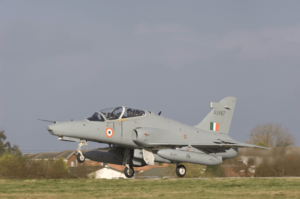Ever wondered how and why an aircraft produces lift or generates drag? Why an airplane can fly but a car or a motorbike can not? Let’s discuss in detail the sources of aerodynamic forces.
Whenever a body is subjected to move or pass through a fluid (either a gas or a liquid) it experiences some forces. The body can be of any type such as an aircraft, an automobile, a bird, or any other object but the magnitude of forces acting on it when passing through the fluid may vary. Aerodynamic forces are the forces acting on a body when it is moving through the air (or any other gas). We will discuss the aerodynamic forces acting on various bodies, and why & how they are generated in this article.

From the wing, fuselage, tail, and engine, etc. of an aircraft to an automobile, all experience aerodynamic forces when moving across the air. Aerodynamic force can be classified into Drag, Lift, and Thrust. Weight also acts on an aerodynamic body, but it is due to the gravitational pull from the earth. The aerodynamic forces and moments on the body are due to only two basic fundamental sources:
- Pressure distribution over the body surface
- Shear stress distribution over the body surface
In nature, the only forces acting on a body moving through a fluid are pressure and shear stress distributions on the surface of the body. The pressure force acts perpendicular along the surface of the body, and the shear stress acts tangential to the surface of the body. Shear stress is caused due to the friction between the molecules of the body, and the air. The net effect of the pressure distribution and shear stress distribution integrated over the complete body surface results in aerodynamic force R and moment M on the body.

We can see in Fig 1. The pressure force is acting normal to the surface locally and also the shear stress is acting tangentially to the surface locally. Pressure and shear stress distributions are the only way to communicate solid objects or surfaces with nature. As we know these forces lead to a resultant R, which further can be divided into subcomponents as Aerodynamic forces.

Streamlines are the path across which fluid particles flow. Streamlines are generated around a body when moving through a fluid with some finite amount of acceleration and velocity. We know that velocity and pressure are dependent on each other. When there is low pressure, high velocity will be there and when high pressure is there then low velocity will be there at a point along the streamlines. So the net unbalanced pressure distribution results in the generation of the aerodynamic force (Lift).
The shear stress can be defined as the force per unit area and acts tangentially along the surface of the body due to friction between the streamlines, and the body. It can vary along the surface and the net unbalanced distribution results in the generation of the aerodynamic force (Drag).

You can see in Fig 3. The V∞ is the velocity along the streamlines and L is the lift component of R perpendicular to V∞ and D is the drag component of R parallel to V∞.
Now let’s answer why an aircraft can fly but an automobile can’t. Both automobile and aircraft experience aerodynamic forces when moving across a fluid. Theoretically, it is possible to design a flying car but currently, the ones which we drive are only designed to produce less drag and not to generate lift. Aircraft are designed in such a way that every component can produce aerodynamic forces and thus fly. The net pressure distribution across an automobile is low or almost negligible so, it cannot produce the aerodynamic force, lift. We will discuss in detail why an aircraft can fly but an automobile can’t in our next article.
Credits – J D Anderson
* The information provided herein is, to the best of our knowledge and is only for informative purpose. If you have a news update or correction, let us know at -info@garudauniverse.com





Muy interesante el artículo de aerodinámica, que junto con la termodinámica de la atmósfera, son temas para entender mejor el vuelo de las aeronaves desde su invento y primer vuelo sobre la tierra. Agradecimientos por compartir su investigación a Parv Kumar
I am a big fan of JD Anderson and his books “Fundamental of aerodynamics” and ” Modern compressible flow”. All time my favorites books. Thanks Parv sir, for sharing his content here.